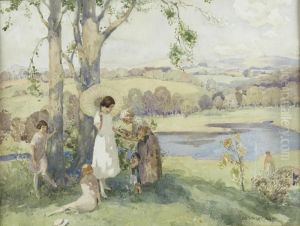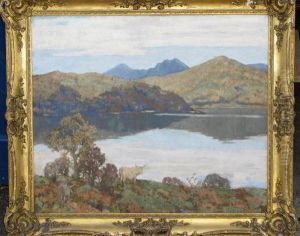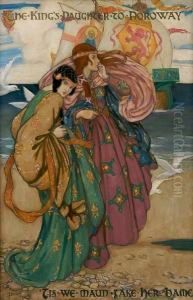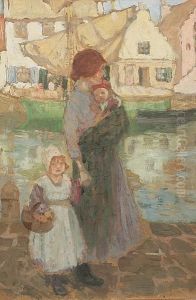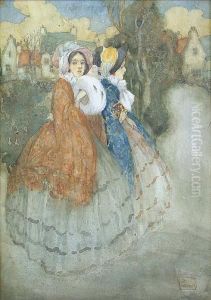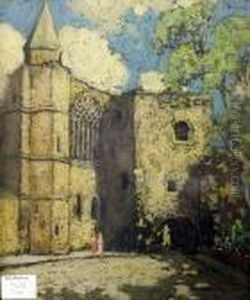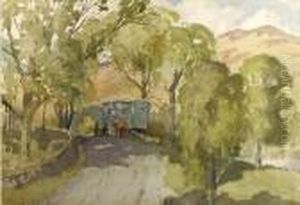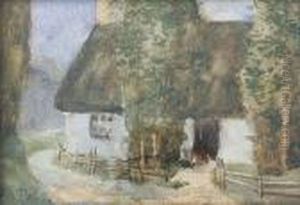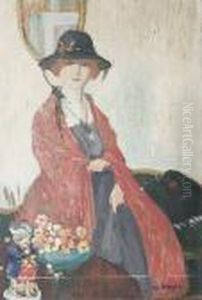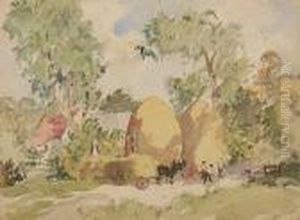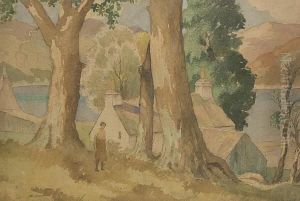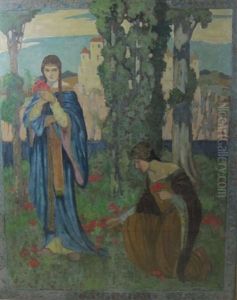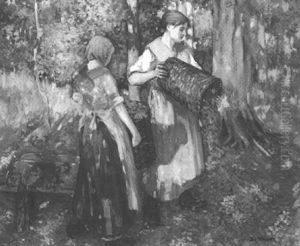James Wright Paintings
James Wright was an American portrait painter who worked during the 18th century. Born in 1735, Wright was active during a period in America that was defined by its transition from colonial rule to an independent nation. While not as widely known as some of his contemporaries, Wright's work nonetheless provides valuable insights into the artistic and cultural milieu of his time.
Wright likely received his artistic training in the colonies and possibly had some exposure to European techniques, whether through travel or through the influence of European artists working in America. His style was characteristic of the colonial American portrait tradition, which was heavily influenced by European, particularly British, portrait painting. Wright's portraits are known for their attention to detail, particularly in the rendering of fabrics and clothing, which reflected the status and wealth of his subjects.
During his career, Wright would have been involved in documenting the burgeoning American upper class and the emerging cultural identities of the time. His work captures the sensibilities of a society that was still very much tied to its European roots, yet was beginning to establish its own identity. Wright's portraits are a record of the individuals who were instrumental in shaping the early history of the United States.
Unfortunately, details about Wright's life and career are somewhat scarce, and his body of work is not as extensive or well-documented as that of some of his peers. This lack of information makes it difficult to fully assess his contribution to the development of American art. However, the quality of his surviving portraits indicates that he was a skilled artist who was able to capture the essence of his subjects with a high degree of realism and sensitivity.
James Wright died in 1793, leaving behind a modest but important legacy as one of the American colonial era's portrait painters. His work serves as a visual documentation of an important era in American history and contributes to the understanding of the social and cultural context of the period.

